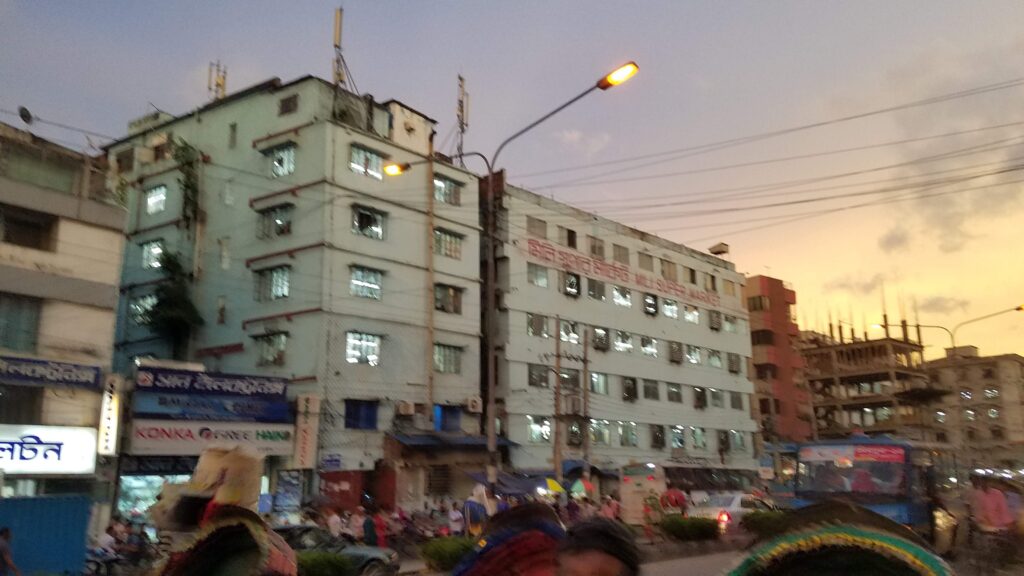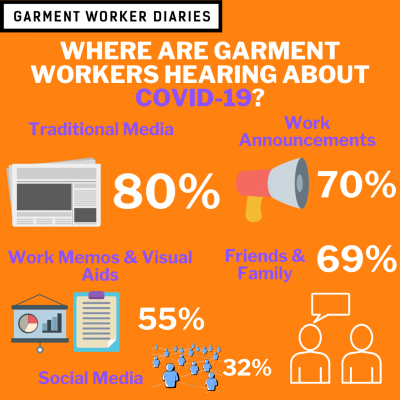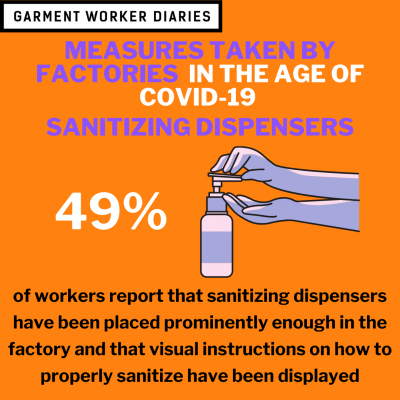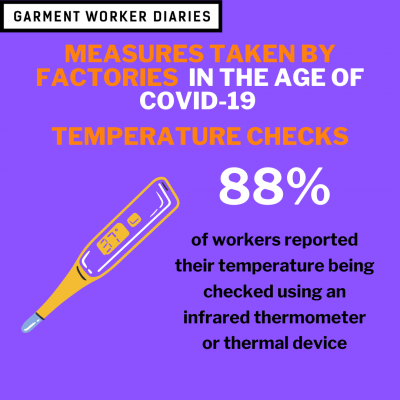Factories in the ready-made garment sector in Bangladesh are beginning to implement new safety measures to cope with the COVID-19 pandemic. Of the 1,241 garment workers we surveyed last week, 80% had worked at their factory in the previous seven days. All interviews were conducted over the phone, and the workers are employed in 390 factories spread across the five main industrial areas of Bangladesh (Chittagong, Dhaka City, Gazipur, Narayanganj, and Savar). Just over three-quarters of the working respondents are women, roughly representative of workers in the sector as a whole.
Here is what workers who worked the previous week are telling us about COVID-19 safety measures being implemented in their factories and how information about COVID-19 is reaching them:
Cleanliness and Disinfection Measures
A majority of respondents report at least some type of disinfection measure put in place to protect the safety of factory workers. However, the details are nuanced:
- 89% of respondents report hand washing or sanitizing having been made mandatory upon entering the factory
- However, only 66% report that all visitors and employees are subject to mandatory hand washing or sanitizing upon entering the factory.
- And only 46% report that hand wash stations have been placed at the main gate.
- 63% of respondents report sanitizing stations placed throughout the factory
- 98% of respondents report that sanitizing dispensers, when present, are regularly being refilled
- However, only 49% report that the sanitizing dispensers have been placed prominently enough in the factory and that visual instructions on how to properly sanitize have been displayed
- 60% of respondents report that frequently touched surfaces are being regularly wiped down by cleaning staff
- Only 44% report that additional cleaning staff have been hired
Personal Health and Safety
- 89% of respondents have been provided a face mask
- However, only 5% report having been provided any other type of personal protective equipment
- 88% of respondents report having their temperature checked by an infrared thermometer or thermal device
- 68% of respondents report that factories are using queue markers to maintain physical distance when workers must assemble in lines
- However, only 36% of respondents report that their factory has established separate entry and exit points
COVID-19 Awareness and Information Spread
- Of the 1,241 workers surveyed, 98% have heard about social distancing as a public and personal safety concept
- Of the respondents in the sample who went to work last week, 77% report maintaining proper social distance while commuting or in the factory
- 70% of respondents report receiving updates about the COVID-19 pandemic from their factory managers via loudspeaker
- However, more respondents (80%) have received similar COVID-19 information from traditional media sources (print, radio, television) and almost as many (69%) have received similar information from speaking with friends or family
- Only 55% report receiving COVID-19 information while at work via visual aids or written communication
- And only 40% report that any visual instructions about COVID-19 are displayed in their factory at all
- Social media played the least significant role in terms of disseminating COVID-19 information to workers, with only 32% reporting having received information this way
Other health and safety indicators were mixed. Just over half (55%) of workers said they themselves or their worker representatives had received training in occupational health and safety measures pertaining specifically to COVID-19. But two-thirds (66%) of workers felt that they had received information from their employer about the proper response to COVID-19 symptoms. In both of these cases, women were more likely than men to report having been properly trained.
Importantly, 90% of all working respondents said they felt comfortable informing their employer if they felt sick, with similar results for women and men.






